What is a flowchart used for? There isn’t just one right answer. There are many types of flowcharts that have different uses, but in general, flowcharts are used for one or more of these three purposes:
- Documenting and standardizing processes
- Analyzing and optimizing processes (process analysis)
- Communicating processes for training or cross-functional collaboration
However, these applications can take a variety of forms in nearly any industry. We’ll take a look at just a few.
Flowcharts for Software Developers
Software engineering teams may use flowcharts early in the development process as a tool to help them plan out and visualize code before beginning to write it. They may also use flowcharts to document non-structured code or the steps in a system.
Flowcharts are helpful for these purposes because they provide a simplified way to visualize complex information and highly technical processes. By thinking through code in flowchart format, the coding process can be more efficient and potential issues could be avoided.
Sometimes, developers will visualize code in a more specific way, using pseudocode that combines regular language and computer language. UML diagrams, which are often used for software development modeling, are the most common example of this.
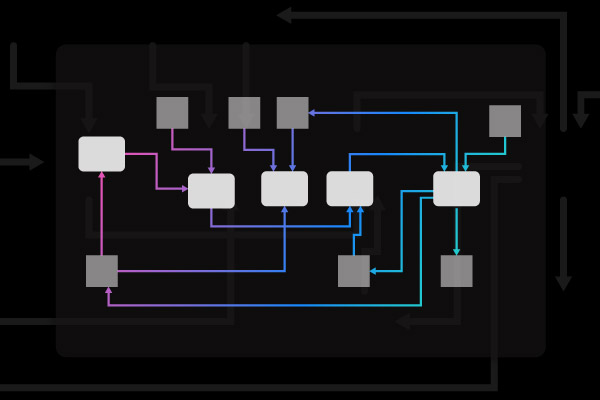
Data Flow Diagrams
Software developers create a flowchart type called data flow diagrams to show how data flows through an information system. Data flow diagrams show the way data is processed and can be helpful when designing or analyzing a system.
Flowcharts for IT Management
Flowcharts help IT teams visualize current processes and map out new ones before implementing them. Because of this, flowcharts might be included in an IT team’s standard operating procedure documentation, which is used as a resource for onboarding new team members.
Some of the processes that IT teams might visualize with a flowchart include procuring new equipment for employees and isolating and troubleshooting network issues. With flowcharts included as a part of IT team SOPs, new team members can quickly acclimate to workflows, and teams can analyze processes in order to improve them.
An IT team might also use a flowchart to visualize and describe complex processes to non-technical stakeholders.
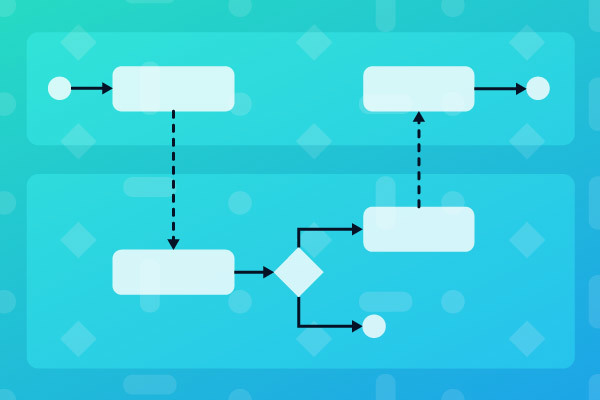
Process Modeling
Process modeling is how IT teams visually document the way their team works, and it can take many forms including flowcharts. Process modeling helps establish clear troubleshooting processes, improve cross-functional communication, and identify opportunities for increased standardization and efficiency.
Flowcharts for Product Teams
Product teams might use flowcharts in two primary ways, to develop and improve the product development process or to work on developing the product itself in the form of brainstorming and customer journey mapping.
Process Improvement
Flowcharts can be used to map out the product development process, both in order to refine it and to communicate it to new team members or other stakeholders.
When laying out the process in a flowchart, it’s easier to see where there’s room for improvement, such as where steps are missing or where it can be optimized for better efficiency or effectiveness. It can also help you see which parts of the process are most successful and help you analyze why it is successful.
Some specific examples of flowcharts that a product team might use for process improvement are a workflow diagram that shows the steps required to complete a task. Mapping workflows can also promote transparency and accountability among team members.
Swimlane Diagrams
Product teams might also use swimlane diagrams to show how the workflow changes between different stages of the process. This helps avoid confusion about which people or teams are responsible for which tasks.
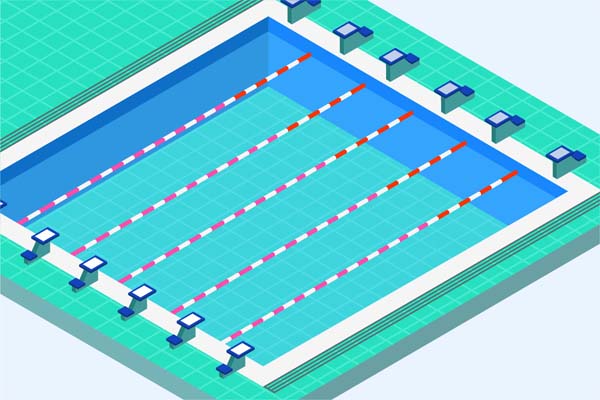
Brainstorming and Journey Mapping
Product teams may also make flowcharts that eventually develop into wireframes, or even features on a product roadmap. They can be a good way to get initial thoughts from a brainstorming session on paper before documenting the idea in more detail.
Process Flow Diagrams
One way to go about brainstorming ideas for product design is to map out the flow of activities you expect users to take when interacting with the product, and how you will engage them at each step. Process flow diagrams can show potential paths or the ideal path for a user to take to complete a goal. This can help the team refine user experiences and consider different paths and solutions before beginning the design process.
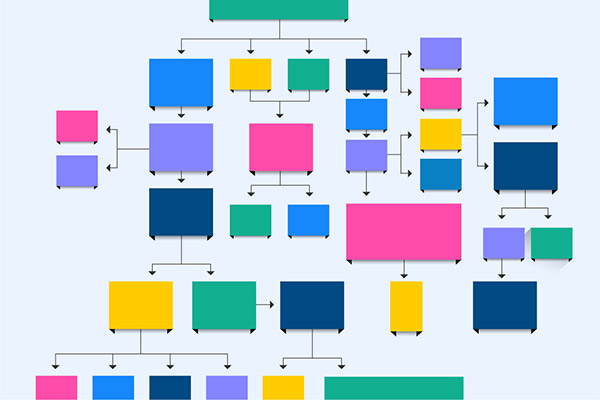
Impact Mapping
Flowcharts can be used to decide which features make it onto the product roadmap. This exercise, called impact mapping, starts with an intended goal and illustrates how each feature will contribute to achieving that goal. This exercise helps product teams prioritize valuable time and resources and keeps the team focused on user-centric design.
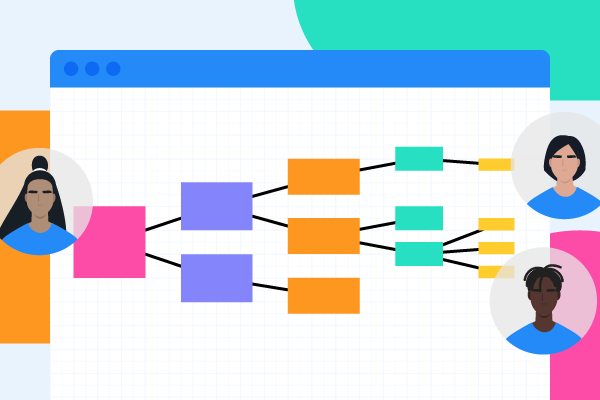
Flowcharts for Business Operations
Businesses often use flowcharts as part of their documentation for portraying various processes and workflows, such as procurement, an employee’s daily tasks, or other strategies. Not only does having such documentation help with efficiency and onboarding new team members, it also is an important resource for auditing the business.
When business processes are documented, it helps the team streamline them for more efficiency and productivity, better training, and clearer communication between departments.
Workflow Diagrams
Workflow diagrams help teams visualize business processes and workflows in order to understand and optimize them. They help teams improve efficiency, align cross-functional teams, introduce new processes, or communicate current ones.
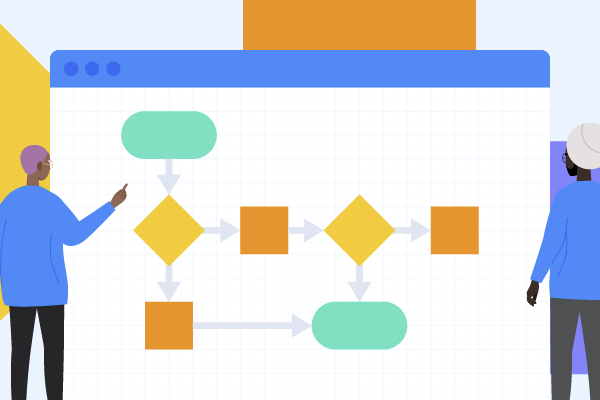
BPMN Diagrams
BPMN diagrams, one of the most common advanced flowchart types, are a specific way to model a business process from beginning to end. It’s different from a regular workflow diagram because it uses a standardized set of symbols to describe the process. However, they have many of the same advantages as workflow diagrams related to efficiency, alignment, and strategic planning.
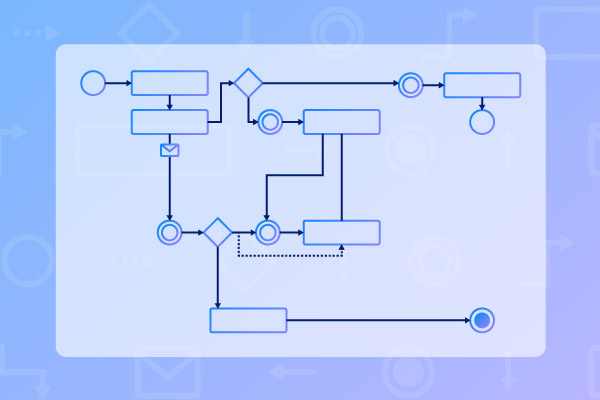
Other Flowchart Use Cases
Sales and Marketing
Sales and marketing teams may use flowcharts to chart the sales process and a prospect’s movement through the sales pipeline. This could be for the purpose of training new members of the sales team or to communicate the process to key stakeholders in the organization.
They can also be used to help identify opportunities based on data, or to document policies and communication plans.
Manufacturing and Engineering
Visualizing processes is important to manufacturing and engineering, because standardization and uniformity are essential to the work being done. Manufacturing organizations create flowcharts to illustrate the manufacturing process and identify dependencies and bottlenecks. They also help with creating a consistent quality assurance or evaluation process.
Make Your Own Flowcharts With Gliffy
Whether you’re in IT, marketing, or anywhere in between, Gliffy is here for all your flowchart-related needs. Watch our video tutorial to learn how to make a flowchart that fits your team’s needs, or check out our guide to flowchart symbols to help you get started.
If you’re creating flowcharts for the purpose of documentation, you can also view our tutorial on how to build diagrams directly within Confluence pages.